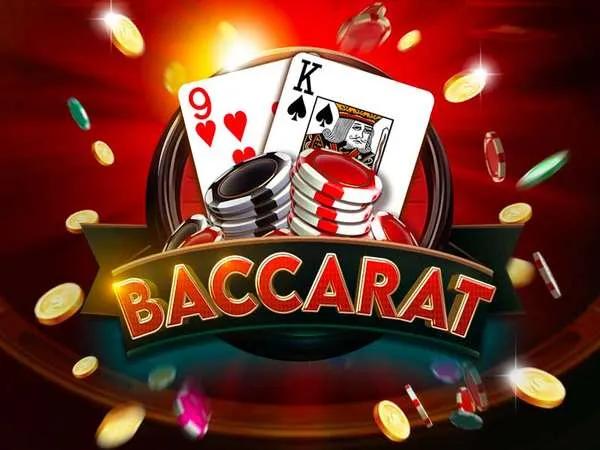Poker Cards: Suits, Values & How the Deck Works
May 26th, 2025
24029
Poker is all about the cards 🃏. Mastering the game of poker begins not with a complex bluff or a bold bet, but with the deck itself. These 52 pieces of paperboard are the foundation of every hand, every decision, and every thrilling win. This guide is your complete resource, designed to break down everything you need to know about poker cards. We'll cover their basic structure, how they form powerful hands, and the subtle rules that govern their use. Ready to master the heart of the game? Let's deal you in.
- Universal 52-card deck used in every major poker format.
- Clear structure with suits and ranks makes learning easier.
- Enables many strategic hand combinations.
- Card ranks allow logical hand comparison.
- Simple for beginners to master with practice.
- Suit hierarchy can confuse players in niche rulesets.
- No jokers in standard play reduces hand variety.
- Subtle rank rules (Ace high/low) take time to understand.
- Beginners misread winning hands under pressure.
- Marked cards create cheating risks in live games.
What Are Poker Cards
At its heart, poker is played with a standard deck of cards. Understanding this fundamental tool is the first step toward building a solid strategy. The cards are the randomized elements that create the puzzle you and your opponents must solve on every street of betting. Poker cards refer to the playing cards used in virtually every poker game. The standard deck contains 52 cards, divided into 4 suits, each with 13 ranks.
Expert Tip: A standard poker deck has 52 cards divided into four suits: hearts, diamonds, clubs, and spades.
Standard 52-Card Deck
The vast majority of poker games worldwide use a standard 52-card French-suited deck. This deck is the universal language of poker, whether you're playing a cash game in Las Vegas or an online tournament from home. It's a precisely balanced tool designed for countless game variations. A typical poker deck consists of:
- 4 suits: ♥️ Hearts, ♦️ Diamonds, ♣️ Clubs, ♠️ Spades
- 13 cards per suit: from Ace to King
- No jokers in most poker formats
This setup ensures uniformity and fairness across games.
Quick Facts:
| Feature | Description |
|---|---|
| Total Cards | 52 |
| Number of Suits | 4 (Hearts, Diamonds, Clubs, Spades) |
| Number of Ranks | 13 (A, 2–10, J, Q, K) |
| Common Deck Usage | Texas Hold’em, Omaha, Stud, Draw Poker |
Suits and Ranks (Hearts, Diamonds, Clubs, Spades)
Every card in the deck has one of four suits and one of thirteen ranks. This combination gives each card a unique identity. Each suit includes cards from Ace to King. While suits differ in symbol and color (♥️♦️ red, ♣️♠️ black), they are equal in value unless specified by house rules or during tie-breaks.
The Thirteen Ranks: These are the values of the cards. In ascending order, they are: 2, 3, 4, 5, 6, 7, 8, 9, 10, Jack (J), Queen (Q), King (K), and Ace (A).
Combining these gives you 52 unique cards (4 suits x 13 ranks). For example, there is a King of Hearts, a King of Diamonds, a King of Clubs, and a King of Spades. This structure is essential for forming various hand combinations, which are the basis of the game.
Card Rankings in Poker
Not all cards are created equal. The rank of a card determines its value, which is critical for evaluating the strength of your hand. The hierarchy is mostly intuitive, but the role of the Ace can sometimes confuse new players. Understanding this ranking system is non-negotiable for playing poker. The order of cards in poker is essential for building hands and determining winners. In most formats, card rank matters far more than suit.
Order of Cards (High to Low)
From highest to lowest, poker cards ranking is:
- Ace (can also be low in straights like A-2-3-4-5)
- King
- Queen
- Jack
- 10 through 2
👉 The high cards in poker help break ties when players don't form a strong hand.
Rank Comparison Table:
| Rank | Value Level | Notes |
|---|---|---|
| Ace | Highest or lowest | Versatile, powerful in straights |
| King | High | Second highest card |
| 2 | Lowest | Weak in most games |
Importance of Suits: Do Suits Have Value?
👉 This is a common question for beginners. In most popular poker variants like Texas Hold’em and Omaha, suits have no value in the . A Royal Flush of hearts is exactly as strong as a Royal Flush of spades. A pair of Kings with one spade and one club is the same as a pair of Kings with one heart and one diamond.
Hands are never decided by a "higher" suit. If two players have the exact same hand (e.g., both have an A-K-Q-J-10 straight), the pot is split between them.
However, in some games like 7-Card Stud, suits are used as a tiebreaker, but not for ranking hands. They are used to determine who must post the "bring-in" bet if multiple players have the same low card showing. The traditional suit ranking for this purpose is alphabetical: Spades (highest) ♠️, Hearts ♥️, Diamonds ♦️, Clubs ♣️ (lowest).
✅ Exceptions:
- In some home games or when dividing pots, suit ranking may be used:
- Spades > Hearts > Diamonds > Clubs (alphabetical)
Jokers in Poker: Used or Not?
In most professional poker games, jokers are not used. However, they appear in some casual or wild-card games. A wild card can be used to represent any suit and rank the player needs to complete a hand. For example, if you hold 4-5-6-Joker, you can use the Joker as a 7 to make a straight. This obviously increases the frequency of very strong hands.
- Jokers can serve as wild cards in home games
- They're not part of standard poker cards rules
- You won’t see jokers in tournaments like the WSOP
Poker Hand Combinations Using Cards
Mastering poker cards hands is vital for gameplay. The goal of poker is to make the best five-card hand. The way these cards combine determines the strength of your hand and its place in the hierarchy. Knowing these combinations by heart is the first major milestone for any new player.
Smart Tip: Each suit has 13 ranks: Ace (high or low), 2–10, Jack, Queen, and King.
How Cards Form Hands (Pair, Straight, Flush, etc.)
Poker hands are ranked by rarity and difficulty of formation. All poker cards hands consist of five cards. Even in games like Texas Hold'em where you start with two cards, the final hand is always the best five-card combination you can make.Here’s how they're built 👇:
| Poker Hand | Description |
|---|---|
| Pair | Two cards of the same rank |
| Two Pair | Two different pairs |
| Three of a Kind | Three cards of the same rank |
| Straight | Five cards in sequence |
| Flush | Five cards of the same suit |
| Full House | Three of a kind plus a pair |
| Four of a Kind | Four cards of the same rank |
| Straight Flush | Five suited, sequential cards |
| Royal Flush | A, K, Q, J, 10 — all of the same suit |
Hand Strength Based on Card Value
When two players have the same type of hand (e.g., both have a flush), the winner is determined by the rank of the cards within that hand. This is where individual card values become critical.
The strength of hands depends on rarity and the value of cards used.
- High card hands rely on the top-ranked card
- Same hand types (e.g. pair vs. pair) are judged by the rank
- Suits don't break ties, except in rare home rules
Examples of Winning Hands
Understanding hand strength in practice is key. Players often find themselves in situations where subtle differences in card value determine the outcome. These are the moments where knowledge of poker winning cards pays off. The poker cards names for starting hands, like "Big Slick" for A-K or "Pocket Rockets" for A-A, are part of the game's culture. Here are winning hands from different games 👇:
| Hand A (Winner) | Hand B (Loser) | Reasoning |
|---|---|---|
| K♦️ Q♦️ 10♦️ 5♦️ 2♦️ | K♣️ J♣️ 9♣️ 6♣️ 3♣️ | Both players have a Flush. Hand A wins because its highest card (Queen) is higher than Hand B's second-highest card (Jack), after the shared King. |
| A♠️ A♥️ K♦️ 8♣️ 5♦️ | A♦️ A♣️ Q♠️ J♥️ 9♠️ | Both have a Pair of Aces. Hand A wins because its Kicker (King) is higher than Hand B's Kicker (Queen). |
| 7♠️ 7♥️ 7♦️ 4♣️ 4♦️ | 6♠️ 6♥️ 6♦️ K♣️ K♦️ | Both have a Full House. Hand A wins because its three-of-a-kind (Sevens) is higher than Hand B's three-of-a-kind (Sixes). |
🎯 Tip: Always aim for at least a pair or better. High cards alone rarely win unless all players miss.
How Cards Are Dealt in Different Poker Games
The question of "how many cards do you get in poker?" depends entirely on the variant you are playing. The dealing procedure is what defines the game's structure and strategy. Poker formats change how cards are dealt and used. The number of cards per player also varies.
Texas Hold’em (2 Hole Cards + 5 Community Cards)
This is the most popular poker variant. Each player receives two private cards, known as "hole cards," that only they can see. After an initial round of betting, five "community cards" are dealt face-up in the middle of the table in three stages: the flop (three cards), the turn (one card), and the river (one card). Players use any combination of their two hole cards and the five community cards to make the best possible five-card hand.
| Texas Hold’em Basics | Details |
|---|---|
| Hole Cards | Players get 2 private cards |
| Community Cards | 5 shared cards dealt face up |
| Winning Hand | Best 5-card hand wins |
| Popularity | ⭐⭐⭐⭐⭐ (Very Popular) |
🔢 Total Cards per Player (Used): 7 (2 + 5)
Omaha (4 Hole Cards)
Omaha resembles Hold’em, but with one major difference: each player receives four hole cards instead of two. The five community cards are dealt in the same way (flop, turn, river). However, the rule for making a hand is very strict: you’re required to use exactly two of your four hole cards and exactly three of the five cards to form your final hand.. This structure leads to more powerful hands being made more frequently.
| Omaha Poker Basics | Details |
|---|---|
| Hole Cards | Each player gets 4 private cards |
| Community Cards | 5 shared cards, just like in Hold’em |
| Hand Requirement | Must use exactly 2 hole cards + 3 community cards |
🤓 How many cards do you get in poker Omaha? 4.
7-Card Stud (No Community Cards)
An older, classic form of poker, 7-Card Stud has no community cards. Each player is dealt a total of seven cards throughout the hand. Three cards are dealt face-down (private) and four are dealt face-up for opponents to see. Players must make the best five-card hand from their own seven cards. The game unfolds over five betting rounds, with a new face-up card delivered on each "street."
| Seven Card Stud Basics | Details |
|---|---|
| Total Cards | Each player gets 7 cards over multiple rounds |
| Hidden Cards | 3 cards are dealt face down (private) |
| Visible Cards | 4 cards are dealt face up (visible to others) |
| Winning Hand | Best 5-card hand wins |
| Shared Cards | No community/shared cards in this variant |
Draw Poker (Card Exchanges)
In Draw Poker (like 5-Card Draw), the goal is simplicity. Each player is dealt a complete five-card hand face-down. After an initial round of betting, players have the option to "draw" new cards. They can discard any number of their original cards (from zero to five) and receive new ones from the deck to try and improve their hand. This is followed by a final round of betting.
| Five Card Draw Basics | Details |
|---|---|
| Initial Deal | Players receive 5 cards face down |
| Draw Rounds | One or more chances to exchange unwanted cards |
| Final Evaluation | Final hand is judged after the last draw |
📌 Draw poker rewards skillful card reading and bluffing.
Marked Cards, Cheating, and Fair Play
The integrity of the game relies on the integrity of the cards. Cheating undermines the skill and luck involved, and casinos and online platforms go to great lengths to ensure a fair playing field for everyone.
What Are Marked Cards
Marked cards are cards that have been illicitly altered in a subtle way so that a cheater can identify them from the back. Methods can be crude or sophisticated, including:
Bending or crimping a corner.
Applying a faint smudge or daub of ink.
Scratching the surface with a fingernail.
Using special invisible ink that is only visible with special contact lenses or glasses.
The goal is to gain an unfair advantage by knowing what cards an opponent holds or what card is coming next from the deck. This is outright cheating and carries severe penalties. Marked cards have subtle alterations — bends, scratches, ink — that allow cheaters to identify them.
🛑 These give unfair advantages by predicting opponent cards or manipulating decks.
How Casinos Prevent Card Tampering
Casinos take rigorous steps to prevent cheating:
| Security Measure | Description |
|---|---|
| High-Quality Cards | Cards with security patterns to prevent marking or tampering |
| Deck Rotation | Regular replacement of decks to ensure fairness and integrity |
| Surveillance & Pit Bosses | Cameras and staff monitor games for suspicious behavior |
| Automatic Shufflers | Used in electronic tables for consistent, tamper-proof shuffling |
Fair Play in Live vs. Online Poker
Ensuring fair play differs between live and online environments. Live poker relies on physical security and human oversight. Online poker relies on advanced technology.
| Poker Environment | Security Notes |
|---|---|
| Live Poker | Watch for physical tells and suspicious behavior at the table |
| Online Poker | No risk of marked cards, but beware of collusion and bots |
| Platform Protections | Trusted sites use RNGs and undergo audits to ensure fair gameplay |
👉 Many players ask, "can you count cards in poker?" The answer is yes, but it’s completely different from blackjack. In poker, "counting cards" refers to the legitimate and essential skill of tracking which cards have been dealt and are visible on the board. This allows you to deduce the probability of your opponents holding certain hands or the likelihood of your desired card appearing. This is not cheating; it is a core part of high-level strategy.
How to Read Poker Cards Quickly
Fast card recognition boosts reaction time and decision-making. In a live game, speed matters. The ability to quickly assess the board and your own hand allows you more time to think about strategy and observe your opponents. For beginners, the board can sometimes look like a confusing jumble of pips and colors.
Top Tip: Jokers are typically not used in standard poker games.
Training Your Eyes for Fast Recognition
- Use flash card apps with timed drills
- Memorize card patterns, especially in straights
- Practice reading full hands at a glance
Suit Grouping and Color Awareness
Grouping suits can help you read potential flushes and blockers:
- ❤️♦️ = Red group
- ♠️♣️ = Black group
Helps with quick sorting of hole cards and community cards.
Tips for Beginners Learning the Deck
Easy ways to learn poker cards names and values:
- Create mnemonics: “KQJ = Royal family”
- Start with pairs and high cards
- Play apps or card matching games
- Memorize rank order daily
📌 Avoid confusion between face cards. Jack ≠ Joker!
Frequently Asked Questions About Poker Cards
How many cards are in a poker deck?
A standard poker deck contains 52 cards. This is the universal standard for the vast majority of games like Texas Hold'em, Omaha, and Stud. While some home games might add Jokers as wild cards, all official online casino and tournament play uses a 52-card deck. The question of how many cards in poker are used in total for a hand depends on the game, but the deck itself is always 52.
Do suits matter in poker hands?
For the purpose of ranking hands, suits do not matter. A King-high flush of spades is equal in value to a King-high flush of hearts, and the pot would be split. Suits are only used in some specific situations as a tie-breaker, such as determining who posts a bet in Stud poker, but this does not affect the final hand ranking.
What’s the difference between poker cards and regular cards?
There is no difference. "Poker cards" is simply a term for a standard 52-card French-suited deck that is being used to play poker. The same deck can be used for Bridge, Rummy, or countless other card games. The poker cards rules are what define the game, not the cards themselves. Cards sold as "poker cards" might be made of more durable materials like plastic to withstand the wear and tear of a poker table, but their composition (4 suits, 13 ranks) is identical.
Related posts











